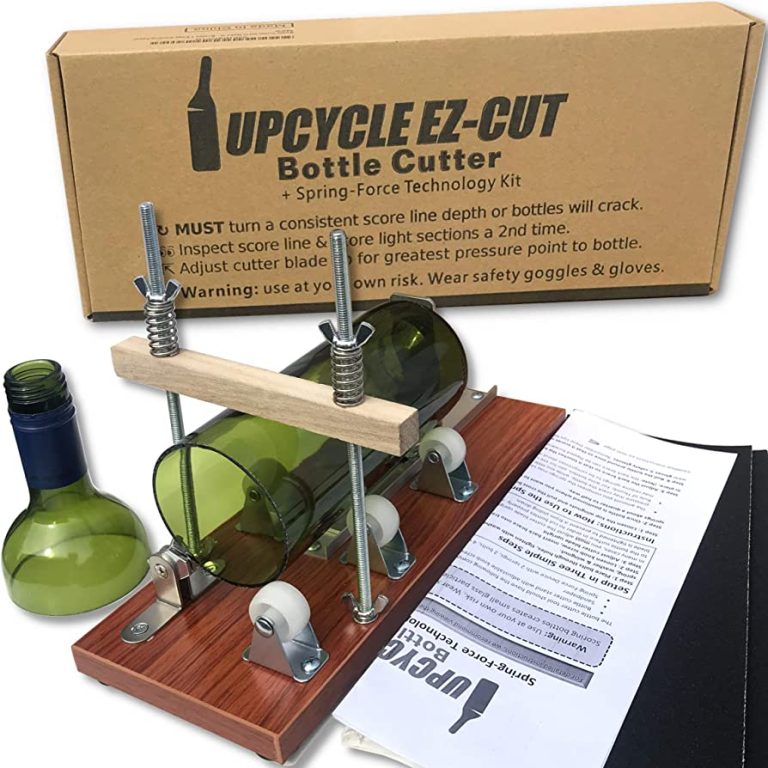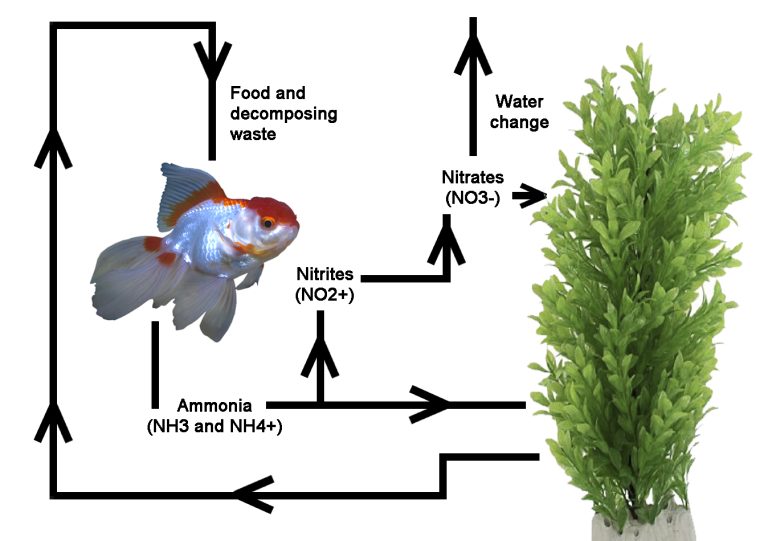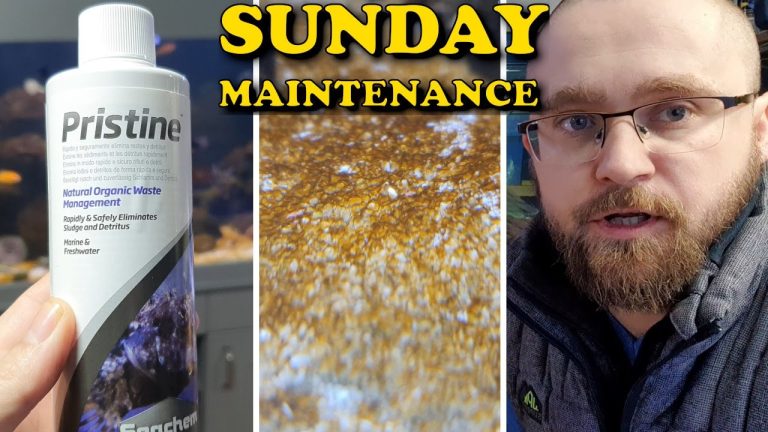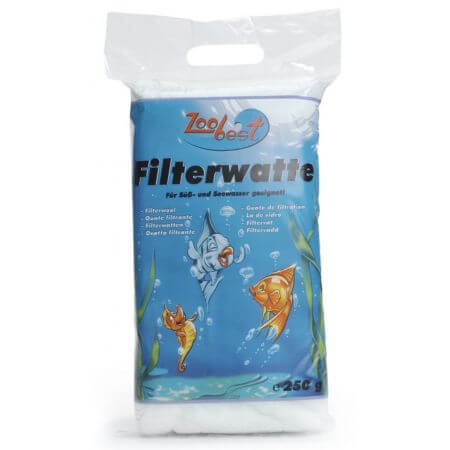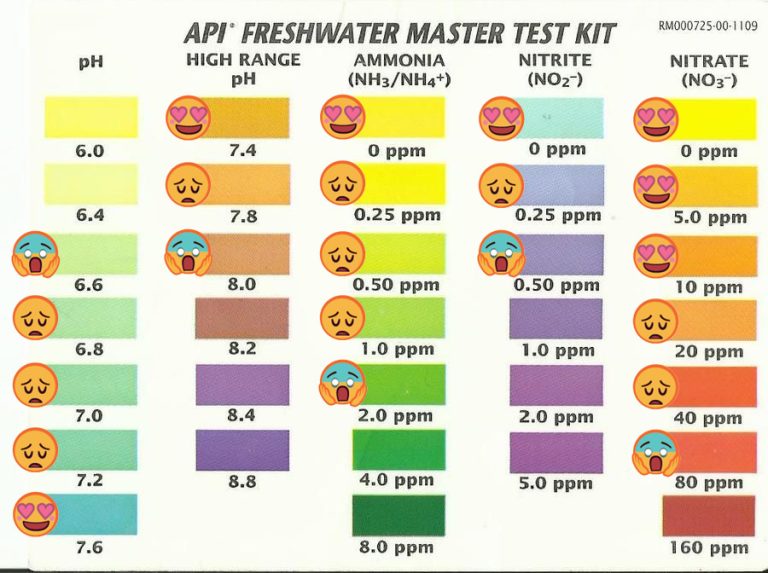Mastering the Art of Adding Sand to an Established Aquarium
To add sand to an established aquarium, start by turning off and unplugging any equipment and slowly adding the sand to avoid clouding the water. Adding sand to an established aquarium can be a daunting task, especially if you’re new to keeping fish.
However, it is essential to maintain the health and cleanliness of the aquarium. Sand is a natural substrate that provides a balanced and healthy environment that benefits the fish and other aquatic life in the tank. It also acts as a natural filtration system that reduces the growth of harmful bacteria.
Therefore, it is crucial to add sand carefully to avoid disturbing the existing environment or harm the fish. In this article, we will guide you on how to add sand to an established aquarium.

Credit: www.beachconnection.net
Aquarium Sand: The Basics
Whether you’re a seasoned aquarium enthusiast or just starting, adding sand to an established aquarium can seem daunting. Aquarium sand comes in various sizes, shapes, and colors, each providing unique benefits to your aquatic environment. In this section, we’ll discuss the importance of aquarium sand, factors to consider when selecting sand, the ideal sand type, and common mistakes to avoid when choosing sand.
Importance Of Aquarium Sand
Aquarium sand plays an essential role in the health and development of your aquatic life. Here are some key benefits of using sand in your aquarium:
- Provides a natural look and feel to your aquarium, making it more aesthetically pleasing and enjoyable for you and your aquatic life.
- Promotes a healthy environment by anchoring live plants and providing a breeding ground for beneficial bacteria, promoting biological filtration.
- Helps your aquatic life simulate natural habitat and behavior, making them happier and healthier.
- Sand is softer on your aquatic life’s delicate fins, preventing abrasions and injuries.
Choosing The Ideal Sand Type
When choosing the ideal sand type for your aquarium, consider the following factors:
- Size: Choose a sand size that is appropriate for your aquatic life; larger sand particles are typically better for bigger fish.
- Color: Consider the color of sand and the color of your aquatic life as the sand’s color may contrast or complement your aquarium’s aesthetic appeal.
- Material: There are different types of sand, including aragonite, silica, and coral sand, each with its unique chemical and physical properties.
- Price: Choose a sand type that fits your budget.
Factors To Consider When Selecting Sand
When selecting sand, here are some critical factors to keep in mind:
- Aquarium size: Determine how much sand you need for your aquarium to avoid overloading it.
- Depth: Choose the appropriate sand depth, usually 1-2 inches for the most effective benefits.
- Cleanliness: Choose a sand that is free of any impurities, as these can harm your aquatic life, making them susceptible to disease and other health issues.
Common Mistakes To Avoid When Choosing Sand
When selecting sand, avoid the following common mistakes:
- Using sand from an unknown and untrusty source: Always choose sand from a reputable and reliable source, ensuring it is free of any hazardous metals or chemicals.
- Choosing a sand type that is too coarse or sharp: Coarse or sharp sand can cause damage to your aquatic life’s delicate fins, leading to injuries and diseases.
- Choosing a sand type that is too fine: Fine sand can disturb your aquatic life’s natural behavior and lead to health issues.
- Using sand from the beach: Sand found on beaches may contain salt and other impurities that can negatively impact your aquatic environment.
Selecting the ideal aquarium sand is crucial in promoting a healthy and happy aquatic environment. By considering the factors discussed, you can choose a sand type that provides the best environment for your aquatic life, making your aquarium beautiful, enjoyable and sustainable.
Benefits Of Adding Sand To Your Aquarium
Adding sand to an established aquarium can be a game-changer. The benefits it provides not only affect the aesthetics but also the health and well-being of your aquarium inhabitants. Here are the advantages of adding sand to your aquarium.
Creating A Natural Look And Feel
Fish and other tank inhabitants hail from a natural environment, and sand can help replicate it. It creates a stunning natural look that brightens up the aquarium. Here’s how sand can contribute to adding a natural look and feel to the aquarium:
- Sand comes in various natural hues, with some showing off different textures, shapes, and grain sizes.
- Sand changes color under different light conditions, providing varying built-in shadows and highlights depending on the aquarium’s lighting.
- Different layers of sand in varying depths, with rocks and plants interspersed in between, can create a realistic river or ocean floor effect.
Enhancing The Aesthetic Appeal Of Your Aquarium
Adding sand can change the look and overall aesthetic appeal of the aquarium. The color and texture of the sand can complement the aquarium’s decor, making it visually appealing. Here are some ways sand can enhance the appearance of your aquarium:
- Adding sand creates depth and texture to the surface area of the aquarium floor.
- Using sand of varying colors can create a focal point in the aquarium, drawing the eye and creating interest.
- Sand can nicely contrast the colors of fish and aquatic plants, making them pop and stand out.
Providing A Conducive Environment For Beneficial Bacteria
Aquariums require a particular balance to maintain water quality and conditions. Sand can provide a habitat for beneficial bacteria to grow, and in turn, help maintain that balance. Here’s how sand contributes to providing the right environment for beneficial bacteria:
- Sand is a porous material that provides a large surface area for bacteria to grow and colonize.
- The bacteria that grow on sand convert harmful toxins, such as ammonia and nitrates, into compounds that are safe for fish and other aquarium inhabitants.
- Sand, as a living substrate, provides a food source for certain types of bacteria, which can aid in breaking down leftover food and other debris that accumulates in the aquarium.
Improving The Overall Health And Well-Being Of Your Aquarium Inhabitants
There’s more to sand than good looks and water quality. It can also improve the health and well-being of fish and other aquarium inhabitants. Here’s how:
- Sand provides aquarium inhabitants a comfortable surface to swim, rest, and play.
- Bottom-dwelling and burrowing fish prefer sand over gravel, which can be too abrasive and hard on their bodies.
- Some aquarium inhabitants, such as certain species of catfish, require sand to aid in their digestion.
Adding sand to an established aquarium offers plenty of benefits. From improving the aesthetics to water quality to the health and well-being of aquarium inhabitants. Consider all the advantages offered by sand and see how it can make your aquarium thrive.
How To Prepare Your Aquarium For Sand
Adding sand to an established aquarium can be a great way to refresh an old tank, but it is important to carefully prepare your aquarium for this change. The following steps outline how to properly prepare your aquarium for sand, including cleaning and rinsing the aquarium, removing and storing the existing substrate, inspecting the aquarium for any leaks or cracks, and adding essential aquarium accessories.
Cleaning And Rinsing The Aquarium
Before adding sand to your aquarium, it is important to clean and rinse it thoroughly to remove any debris, algae, or residue. Here are the key steps to follow for cleaning and rinsing your aquarium:
- Remove all decor, plants, and other items from the tank
- Drain the water out of the aquarium
- Use an algae scraper or scrub brush to remove any algae or dirt from the sides of the tank
- Rinse the tank with clean water several times to remove any remaining debris
- Let the tank dry completely before adding sand
Removing And Storing The Existing Substrate
To add sand to an established tank, you will need to remove and store the existing substrate. Here are the key steps to follow when removing and storing the substrate:
- Drain the water out of the aquarium
- Use a siphon or vacuum to remove as much of the existing substrate as possible
- Place the old substrate into buckets or containers for storage
- Label the containers with the type of substrate and date it was removed
- Store the containers in a cool, dry place until you are ready to reuse the substrate
Inspecting The Aquarium For Any Leaks Or Cracks
Before adding sand to your aquarium, it is important to inspect it for any leaks or cracks. Here are the key steps to follow for inspecting your aquarium:
- Carefully examine the seams and walls of the aquarium for any signs of damage
- Fill the tank with water and let it sit for several hours to check for any leaks
- If you notice any cracks or leaks, do not proceed with adding sand until the issue has been resolved
Adding Essential Aquarium Accessories
Once your aquarium is clean, the existing substrate has been removed and stored, and you have inspected the tank for any damage, you are ready to add sand. Before doing so, be sure to add any essential aquarium accessories, such as a heater or filtration system, to your tank.
Adding sand to an established aquarium requires careful preparation to ensure the health and safety of your fish and plants. By following these steps, you can properly prepare your aquarium for sand, creating a beautiful and healthy environment for your aquatic pets to thrive in.
Step-By-Step Guide To Adding Sand To An Established Aquarium
Adding sand to an established aquarium can be a bit tricky, but it’s a great way to change up your aquarium’s look and provide more hiding areas for your aquatic pets. Luckily, with a bit of preparation and care, you can change the substrate in your aquarium with minimal fuss.
In this step-by-step guide, we’ll show you how to add sand to an established aquarium.
Measuring The Amount Of Sand Required
Before you get started, it’s crucial to measure how much sand you need. As a rule of thumb, aim for 1-2 pounds of sand per gallon of water. So, for example, if you have a 20-gallon aquarium, you’ll need around 20-40 pounds of sand.
Here are some more helpful tips:
- Use a container to measure the sand to ensure you’re adding the right amount.
- Don’t rely on guesswork, as adding too much sand can cause issues with the filter and oxygenation.
Adding The Sand Gradually To Avoid Cloudy Water
Adding your sand all at once can cause the water to become cloudy, making it difficult for fish and plants to thrive. To avoid this problem, add the sand gradually using these steps:
- Gently pour the sand into the aquarium, making sure to pour it onto a plate or saucer to avoid digging up plants.
- Use your hands or a gentle stream of water to spread the sand evenly across the bottom of the aquarium.
- Work slowly, adding small batches of sand until you reach the desired depth.
Spreading Sand Evenly Across The Aquarium
Once you’ve added the sand, it’s time to distribute it evenly across the aquarium floor. Follow these steps to make sure you have a nice, even layer:
- Use a flat object like a ruler or a scraper to level out the sand and create even areas.
- Spread out any lumps or bumps by shifting them around with your fingers.
Creating Contour Or Slope Areas
Now that you’ve got the sand evenly spread out across the aquarium floor, you may want to create contour or slope areas. These will give your fish new hiding places and make your aquarium look more natural. Follow these tips:
- Use your fingers or hands to create contour areas for fish to hide or swim through.
- Add sand to create a gradual slope from the back of the aquarium to the front.
Refilling The Aquarium With Water
Once you’ve achieved your desired effect, it’s time to refill the aquarium with water. Here are some tips for a smooth refill:
- Slowly add water using a jug or hosepipe.
- Keep an eye on your filter to ensure it remains functional during the refill.
Congratulations! You’ve successfully added sand to your established aquarium. Remember to keep an eye on your fish and aquarium conditions as the new sand settles to the bottom over the next few days. Enjoy your new and improved aquarium!
Maintenance And Care For Your Sand-Filled Aquarium
Adding sand to an established aquarium is an exciting experience for any aquarist. While many benefits of sand include natural look and chemical filtration, adding sand also comes with maintenance and care responsibilities. We will explore the key points to consider when caring for your sand-filled aquarium.
Regular Water Changes
Regular water changes are essential for maintaining a healthy aquarium. Changing 10-15% of the water every two weeks will keep the water conditions stable. Here are some tips to help you with regular water changes:
- Use a siphon to remove debris and dirt from the substrate.
- Monitor water temperature, ph level, and nitrate levels after the water change.
- Make sure to use dechlorinated water.
Substrate Vacuuming And Cleaning
As waste and debris accumulate on the substrate, the formation of anaerobic bacteria becomes more likely. Keep the substrate clean with regular vacuuming and cleaning. Here are some key points to note:
- Use a gravel vacuum to clean the debris and dirt from the sand.
- Do not remove all the sand while cleaning as it may disturb the beneficial bacteria in the substrate.
- Clean the sand in sections.
Balancing Water Parameters
Water parameters need to be balanced for the health of your aquarium’s inhabitants. Keeping track of the ph level, ammonia level, and nitrate level is necessary. Here are some tips for you:
- Pay attention to how much food you feed your fish – overfeeding can cause an increase in ammonia levels.
- Use a water testing kit to evaluate and monitor the water parameters and maintain them within the appropriate range.
- Maintain consistent water temperature.
Monitoring For Signs Of Unhealthy Aquarium Inhabitants
Keeping an eye out for unhealthy aquarium inhabitants is a crucial part of maintaining a healthy aquarium. Here are some things to watch out for:
- Unusual behavior or lethargy in fish can indicate health issues.
- Excessive algae growth can indicate a nutrient imbalance in the water.
- Uneaten food can lead to an increase in ammonia levels.
Troubleshooting Common Sand-Related Issues
Sand-related issues can affect the health of your aquarium’s inhabitants. Knowing how to troubleshoot these issues is essential. Here are some common issues you may encounter:
- Cloudy water: Can occur due to insufficient cleaning or a bacterial bloom. Increase water changes to reduce cloudiness.
- Algae growth: Can cause discoloration on the sand surface. Control the phosphate levels to limit algae growth.
- Dead spots: Can be the result of insufficient sand depth or poor water circulation. Reorganize the aquarium to improve water circulation and add more substrate.
Maintaining and caring for your aquarium is crucial for the health of its inhabitants. Proper maintenance and attention will ensure that your sand-filled aquarium thrives.
Frequently Asked Questions On How To Add Sand To An Established Aquarium
How Much Sand Should I Add To An Established Aquarium?
It is recommended to add 1 to 2 pounds of sand per gallon of water.
How Should I Clean The Sand Before Adding It To The Aquarium?
Rinse the sand several times with a hose until the water runs clear.
Can I Add Sand Without Removing The Fish From The Aquarium?
Yes, but be sure to add sand slowly to avoid disturbing the fish.
Will Adding Sand To My Aquarium Affect The Water Quality?
Sand may cause a temporary cloudiness in the water, but it will settle after a few hours. Check the water quality regularly.
Conclusion
Adding sand to an established aquarium is not a difficult task, but it requires some careful consideration. Following the steps mentioned in this article will ensure that you provide your aquarium inhabitants with a comfortable and healthy environment. Before adding sand, it is always important to research the type of substrate that is best suited for your aquarium’s ecosystem.
Adding sand can improve visual beauty and naturalness to the aquarium, giving it a more realistic appearance. While adding sand may seem intimidating, it should be done slowly and carefully to preserve the ecosystem balance. Also make sure to keep an eye on the water parameters to ensure that the aquarium inhabitants are not adversely affected.
Adding sand to an established aquarium is a crucial step in providing the fauna with a healthy and comfortable environment, which should be done with proper research, care and monitoring.

